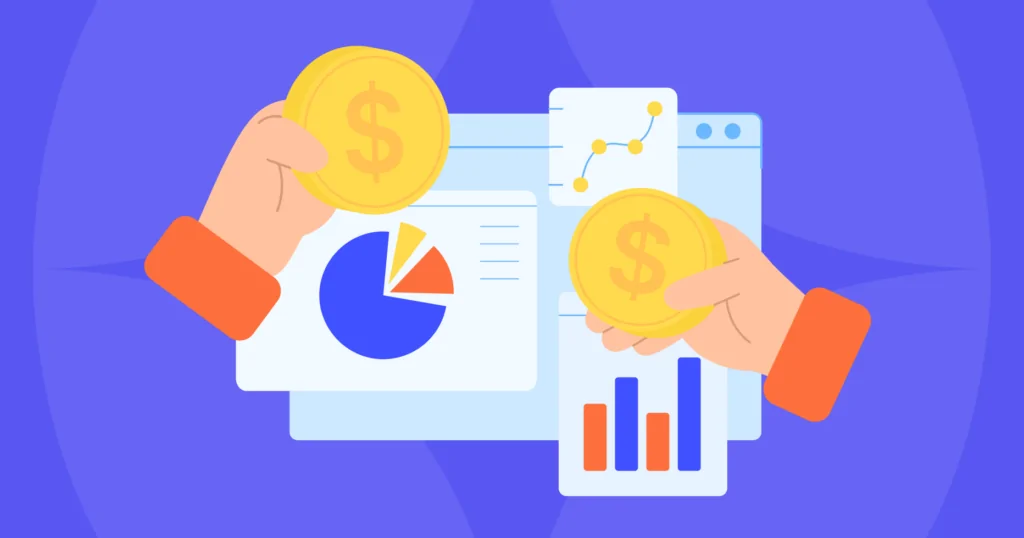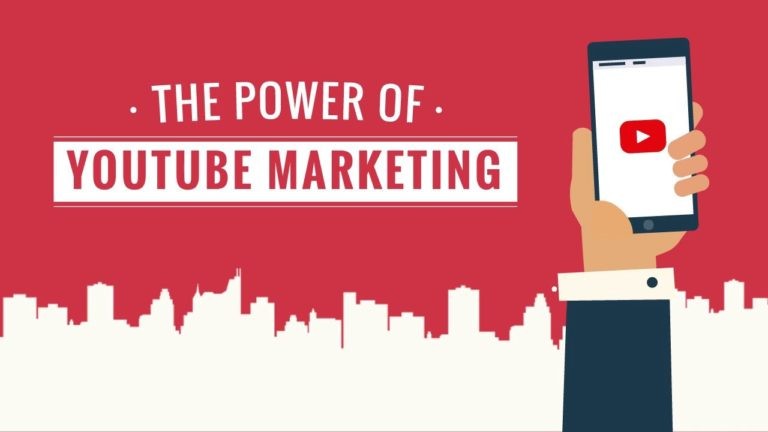Ranking high in search results (SEO) used to be the golden ticket for bloggers in blogging looking to turn their passion into profit, things have gotten a bit more interesting (and perhaps a touch more challenging). Don’t get us wrong, Google’s traffic machine is still a powerful tool. But the ever-growing crowd of bloggers and the complexities of the algorithm have forced many to think outside the box.
This guide dives deep into the many ways you can monetize your blog in 2024, without getting stuck relying solely on that elusive top spot on a search engine results page.
1. Diversifying Traffic Sources
Elevating Beyond SEO
We all know Google is king. But to really watch your website flourish, it’s time to move beyond just SEO and embrace a well-rounded strategy for bringing in traffic. There’s a whole world of platforms out there – Pinterest, YouTube, TikTok, Instagram, Twitter, LinkedIn – all brimming with potential to send visitors your way.
Let’s dive into a few of these powerhouses:
- Pinterest: This visual search engine is a goldmine for affiliate marketers and anyone looking to generate ad revenue. With stunning visuals leading the way, it’s a fantastic platform to showcase your products or services.
- Video Platforms (YouTube, TikTok): If you’re looking to build a community of loyal fans and drive traffic back to your website, video platforms like YouTube and TikTok are your secret weapons. Not only can you establish yourself as an authority, but you can eventually use your platform to sell your own products or courses.
- Twitter and LinkedIn: The power of words shouldn’t be underestimated. These text-based platforms are perfect for sharing valuable content, building an email list for your newsletter, and promoting affiliate sales through regular, engaging posts.

2. The Power of Newsletters
Creating video content or social media posts can feel daunting, but there’s a fantastic alternative: newsletters! By focusing on text-based content, you can leverage platforms like LinkedIn and Twitter to drive traffic to your blog or grow your email list, all without appearing on camera.
LinkedIn: Building Authority and Your Audience
- Regular Posts: Share links to your blog content on LinkedIn. This drives traffic back to your website and establishes you as a thought leader in your industry.
- Building Your Newsletter: Use LinkedIn to promote your newsletter. Let your connections know about the valuable insights they can expect by subscribing.
Twitter: Engaging in Short Bursts
- Short Posts & Threads: Craft concise and informative tweets that pique your audience’s interest. Use Twitter threads to delve deeper into a topic and link back to your blog posts for a more comprehensive read.
- Memes for Engagement: Who doesn’t love a good meme? Create or share industry-related memes to spark conversations and attract new followers. The goal here is to build brand awareness and eventually drive traffic to your blog or lead capture page.
Newsletters are a powerful tool, and by using these simple strategies on LinkedIn and Twitter, you can build an audience and drive traffic without ever needing to step in front of a camera.

3.Affiliate Revenue Beyond Google
While ranking high in Google searches can still bring in affiliate income, spreading your net wider can be a goldmine. Here are some effective ways to generate affiliate revenue beyond Google’s search engine:
a. Sponsorships:
- Build a Loyal Audience: The key to attracting sponsors is establishing a strong email list and becoming a trusted authority in your niche.
- Targeted Marketing: With a dedicated audience, you can attract sponsors who want to reach people genuinely interested in their products or services. This creates a win-win situation: you get paid to promote relevant products, and your audience discovers valuable offerings.
b. Third-Party Platforms:
- Expand Your Reach: Don’t limit yourself to your own website. Platforms like LinkedIn and Twitter are fantastic avenues to drive traffic back to your blog posts and affiliate offers.
- Content is King: The key here is to create high-quality content that resonates with the audience on these platforms. Share valuable insights, industry news, and engaging discussions that organically weave in your affiliate offerings.
- Targeted Engagement: Tailor your content and interactions on each platform to its unique audience. For example, a professional and informative approach might work best on LinkedIn, while a more casual and interactive style might be more effective on Twitter.

4. Leveraging Pinterest for Affiliate and Ad Revenue
Pinterest isn’t just a mood board for pretty pictures; it’s a treasure trove for savvy marketers. This visual search engine holds immense potential for generating income through affiliate marketing and ad revenue.
Here’s how you can tap into that potential:
- Craft Captivating Pins: People scroll through Pinterest feeds quickly, so grab their attention with stunning visuals and informative descriptions. High-quality images and videos will make your pins stand out, while clear and concise text will entice users to click and learn more.
- Pins with a Purpose: Don’t just showcase products – use your pins to tell a story or solve a problem. Feature eye-catching visuals paired with informative content that compels users to click through. Link your pins to blog posts containing affiliate links for product recommendations, tutorials, or DIY guides. This way, you provide valuable content while promoting products you love and potentially earning a commission.
- Product Power: Take advantage of Pinterest’s product tagging features. Partner with relevant brands and leverage affiliate partnerships to showcase their products directly on your pins. When users click on the tagged product, they’ll be directed to the retailer’s website, and if they make a purchase, you’ll earn a commission.

5. Harnessing the Power of YouTube
YouTube isn’t just a platform for watching cat videos (although, let’s be honest, those are pretty great). For bloggers, it’s a goldmine of potential for building a loyal audience and driving traffic back to your blog. Here’s how you can leverage the power of YouTube:
a. Link to Your Blog Content in Blogging
Don’t let your viewers get lost in the YouTube ! In every video description, include a clear and enticing call to action with a link to your blog post that expands on the video’s topic. This keeps viewers engaged and drives traffic to your written content, where they can delve deeper into the subject matter.
b. Build Trust Through Valuable Content
The key to success on YouTube, like any platform, is building trust with your audience. This means creating high-quality videos that offer genuine value. Inform, educate, entertain – whatever your niche is, focus on providing something viewers can’t find anywhere else.
The more valuable your content, the more likely viewers are to subscribe, like, and – most importantly – trust your expertise. Once that trust is established, they’ll be naturally curious to see what else you have to offer on your blog.
c. Sell Your Own Products (Once You Have an Audience)
Building a loyal audience takes time and effort, but the rewards can be substantial. Once you’ve established a strong following, you can explore opportunities to sell your own products or courses directly through YouTube.
This could be anything from ebooks related to your niche to online courses that expand on the information you provide in your videos. Remember, a strong foundation of trust is key here. Viewers are more likely to purchase from someone they already know and respect.
By implementing these strategies, you can turn YouTube from a casual browsing spot into a powerful tool for promoting your blog and building a thriving online community.

6. Organic SEO in 2024: Keywords and Beyond
Organic SEO isn’t going anywhere. But in 2024, it’s all about creating content that resonates with your audience, not just stuffing keywords into every sentence.
Here are some key things to consider:
- Finding your niche: Instead of battling SEO giants in broad markets, target niches with less competition. This way, you can climb the search rankings faster and with less backlink building (which can be a real struggle).
- Understanding what people are searching for: Don’t just focus on keywords – dig deeper and understand the intent behind them. What problem are people trying to solve? What questions do they have? Target keywords that reflect this specific need, like “best running shoes for beginners with shin splints.”
- Becoming the go-to expert: Don’t just write one blog post and call it a day. Create a variety of content – blog posts, videos, infographics – that showcases your expertise in your chosen niche. The more valuable and informative your content is, the more authority you’ll build in the eyes of search engines.

7. Building Your Content Strategy:
In the ever-evolving world of blogging, consistency and value reign supreme in 2024. To truly thrive, you need to establish a content strategy that keeps your audience engaged and coming back for more. Let’s delve into the key components to craft a winning strategy:
a. Choosing Your Platforms
The first step is selecting the platform(s) that best suit your niche and the type of content you create.
Here’s a breakdown to guide your decision:
- Text-based content: If your focus is written content like articles, tutorials, or reviews, platforms like WordPress, Blogger, or Medium are excellent choices.
- Video-centric content: For video enthusiasts, YouTube is the undisputed king. Other options include platforms like Vimeo or even social media channels like Instagram Reels or TikTok.
- Image-driven content: If captivating visuals are your strength, consider platforms like Pinterest or Instagram.
b. Content Types
Don’t just churn out the same type of content day in and day out. To cater to your audience’s diverse needs, create a healthy mix of:
- Informational content: This educates your audience, establishes you as an authority, and builds trust. It can take the form of blog posts, “how-to” guides, explainer videos, or infographics.
- Transactional content: This content nudges your audience towards a desired action, such as making a purchase, signing up for a service, or downloading an ebook. Examples include product reviews, case studies, or sales-oriented videos.
c. Diversifying Your Revenue Streams
While affiliate marketing can be a great way to monetize your blog, it shouldn’t be your sole source of income. Explore additional revenue streams to create a more sustainable financial model:
- Sponsorships: Partner with brands relevant to your niche for sponsored content or product placements.
- Ad revenue: Once your blog gains traction, consider integrating targeted advertising to generate income.
- Selling your own products: If you have expertise or creative flair, consider developing and selling your own ebooks, online courses, or physical products related to your niche.
By implementing these strategies and consistently delivering valuable content, you’ll be well on your way to building a thriving blog in 2024 and beyond.

Conclusion:
The blogging game has changed. While SEO remains important, diversification is key. Explore social media marketing, email marketing, guest blogging, and online communities to expand your reach.
Platforms like Pinterest and YouTube offer immense potential. Create captivating Pinterest pins and consider YouTube videos to complement your blog.
At the core of success lies audience-centric content. Understand your audience, focus on quality and consistency, and experiment with formats. Building a brand and trust is equally important. Develop a consistent voice, be transparent, and engage with your readers.
Remember, blogging is a marathon, not a sprint. Consistently deliver value, adapt to the evolving online landscape, and success will follow.
FAQ:
How can I leverage newsletters for monetization?
By regularly posting on platforms like LinkedIn and Twitter, linking to your blog content, and encouraging readers to join your email list, you can build a loyal subscriber base and eventually monetize through sponsorships and affiliate sales.
What are the benefits of using Pinterest for affiliate and ad revenue?
Pinterest offers significant potential for affiliate revenue and ad revenue by creating engaging pins with affiliate links, utilizing product tagging, and tapping into its vast user base as a visual search engine
How can YouTube contribute to my blog's monetization?
YouTube provides opportunities to build a loyal audience, drive traffic to your blog through video descriptions, and eventually sell your own products or courses to a highly engaged audience.
Is organic SEO still relevant in 2024?
Yes, organic SEO is still relevant, but it's essential to focus on audience-centric content and choose niches with lower competition to avoid the need for extensive backlinking.
How do I build a successful content strategy for my blog?
Build a content strategy by selecting platforms based on your niche and content type, creating a mix of informational and transactional content, and diversifying revenue streams beyond affiliate revenue.


